Table of Contents
- Overall Market Performance: Bitcoin, S&P 500, and Gold
- Bitcoin: More Than Just a Crypto Asset
- State of Blockchains in Q1 2025
- Ethereum As The Institutional Anchor
- Rising Internal Competition Within the Solana Ecosystem
- Berachain: Rise Of Proof-Of-Liquidity
- Sonic: Developer-Centric Incentives Drive Early Adoption
- Closing Thought About Blockchains
- The Biggest Hack in Crypto History
- The Decline of the Meme Coin Mania
- The Stablecoin Boom Amid a Market Downturn
- The Bottom Line
Table of Contents
- Overall Market Performance: Bitcoin, S&P 500, and Gold
- Bitcoin: More Than Just a Crypto Asset
- State of Blockchains in Q1 2025
- Ethereum As The Institutional Anchor
- Rising Internal Competition Within the Solana Ecosystem
- Berachain: Rise Of Proof-Of-Liquidity
- Sonic: Developer-Centric Incentives Drive Early Adoption
- Closing Thought About Blockchains
- The Biggest Hack in Crypto History
- The Decline of the Meme Coin Mania
- The Stablecoin Boom Amid a Market Downturn
- The Bottom Line
Crypto Market Recap: Q1 2025
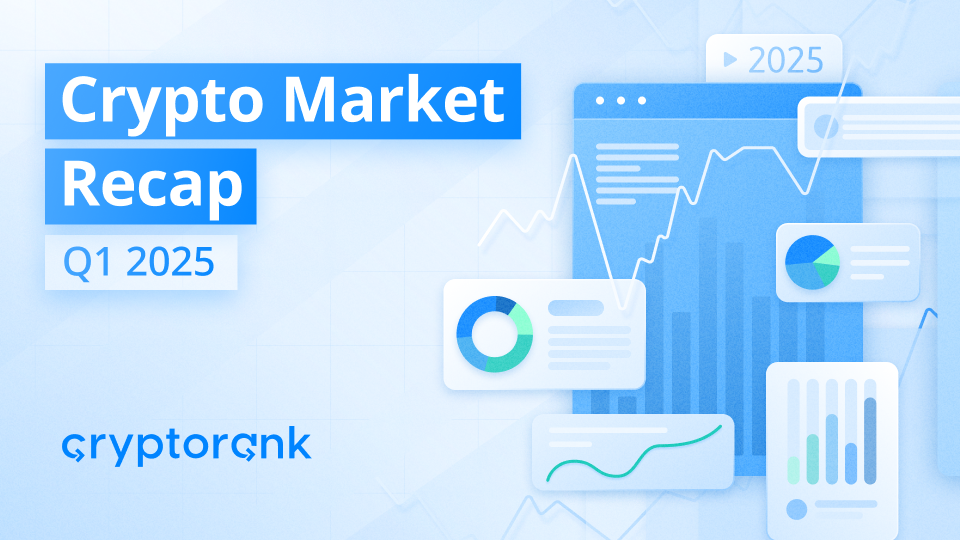

Overall Market Performance: Bitcoin, S&P 500, and Gold
The first quarter of 2025 was marked by significant volatility for Bitcoin. At the start of the quarter, Bitcoin rallied and reached a new all-time high, but later entered a downtrend, ultimately closing Q1 with an -11.7% return.
The reason behind this price action lies largely in the market's reaction to Donald Trump's policies. To illustrate this point, let's examine the price movements of the three assets in focus: Bitcoin, the S&P 500, and gold.
From the moment of Trump's victory in the election to his inauguration, Bitcoin experienced a strong rally, peaking at $108,824 on January 20—the day of the inauguration. Following a brief period of sideways movement, Bitcoin began a gradual decline, consolidating between $96,000 and $84,000. At the beginning of Q2, following Trump’s announcement of new tariffs, Bitcoin—alongside other assets—saw a sharp drop, falling to a local low of $74,781, before rebounding to $81,000 after the announcement of a 90-day pause on tariffs.
The S&P 500 showed a similar trajectory. After Trump's election win on November 5, 2024, the index surged and continued climbing in the weeks that followed. Following a mild correction between December 18 and January 14, the index resumed its uptrend leading up to the inauguration. The market continued to rise slowly until February 19, when concerns over Trump's economic policy direction triggered a sharp sell-off. Interestingly, this decline halted on March 13 and remained stable through April 2—the same period during which Bitcoin also stopped falling and even posted a minor recovery. However, on April 2, news of broad tariff implementations sparked another aggressive sell-off, followed by a rebound on April 9 after the temporary suspension of the tariffs was announced.
Gold, in contrast, followed a different path. After Trump’s election victory, gold corrected and hit a local bottom at $2,543 on November 14. Following a rebound to the $2,650 level, gold traded mostly sideways through the end of 2024. However, from the beginning of 2025, gold began a steady uptrend, posting higher highs and eventually reaching an all-time high of $3,162 on April 3.
What observations and conclusions can we draw from this price behavior?
-
Bitcoin outperformed the S&P 500 in Q1 2025 but underperformed gold.
-
Notably, Bitcoin’s price movement closely mirrored that of the S&P 500. Despite its reputation as “digital gold,” Bitcoin appears to correlate more with the stock market than with gold.
-
The price dynamics of Bitcoin, the S&P 500, and gold are heavily influenced by current U.S. policy decisions, as evidenced by their sharp reactions to key political and economic news from the United States.
-
The rise in gold alongside declines in other assets reflects growing market uncertainty regarding Donald Trump’s policy agenda.
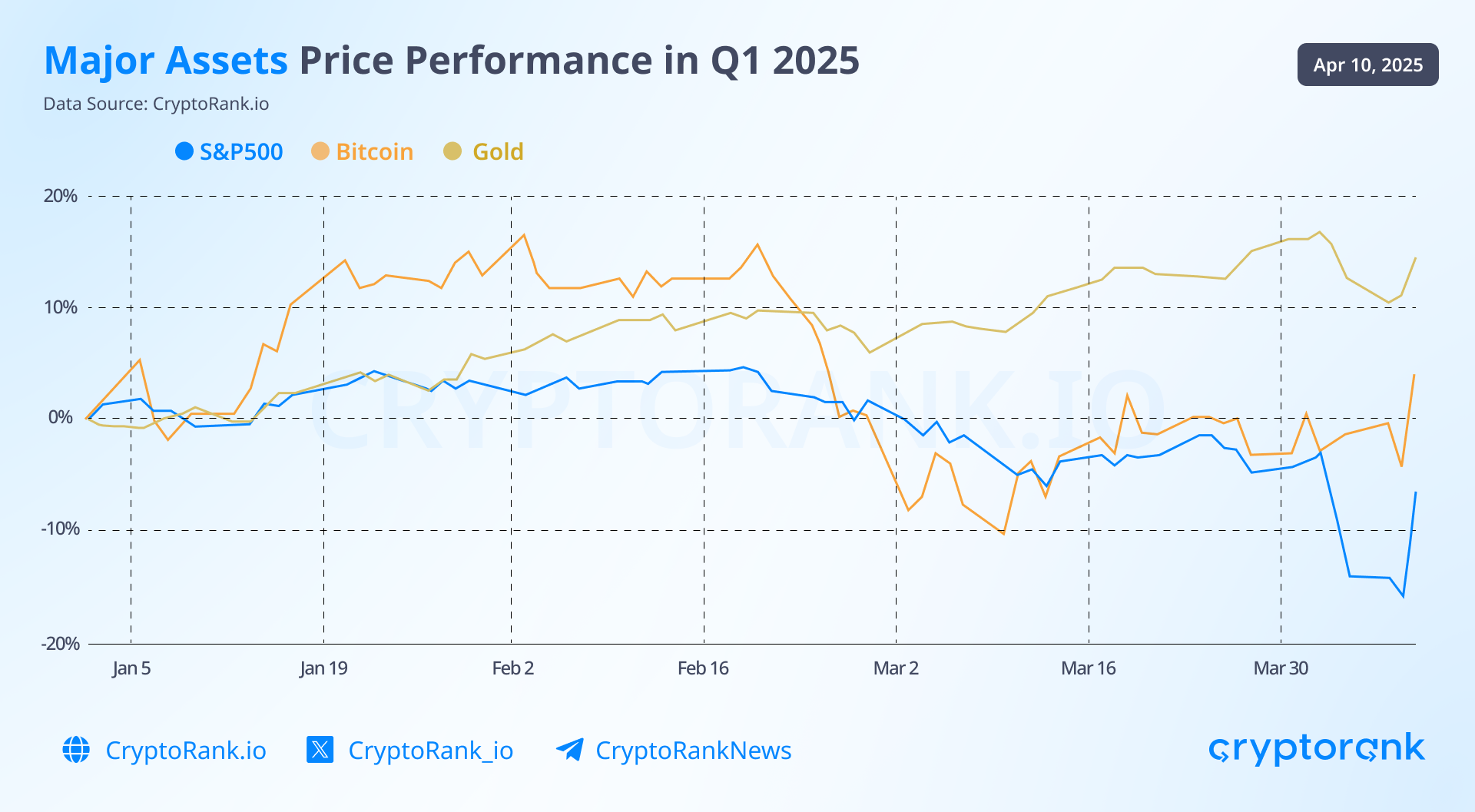
Bitcoin: More Than Just a Crypto Asset
Bitcoin's outperformance relative to the S&P 500 may be partially explained by Donald Trump’s alleged intention to create a national crypto reserve. In late 2024 and early 2025, a proposal known as the "BITCOIN Act of 2024" circulated online. The plan suggested that the U.S. would purchase 200,000 BTC over five years. Under the assumption of a 25% annual price increase over the next 25 years, such a reserve could theoretically cover around 44% of the U.S. national debt. While this scenario seems far-fetched, the very existence of such discussions around a strategic crypto reserve helped support Bitcoin’s price.
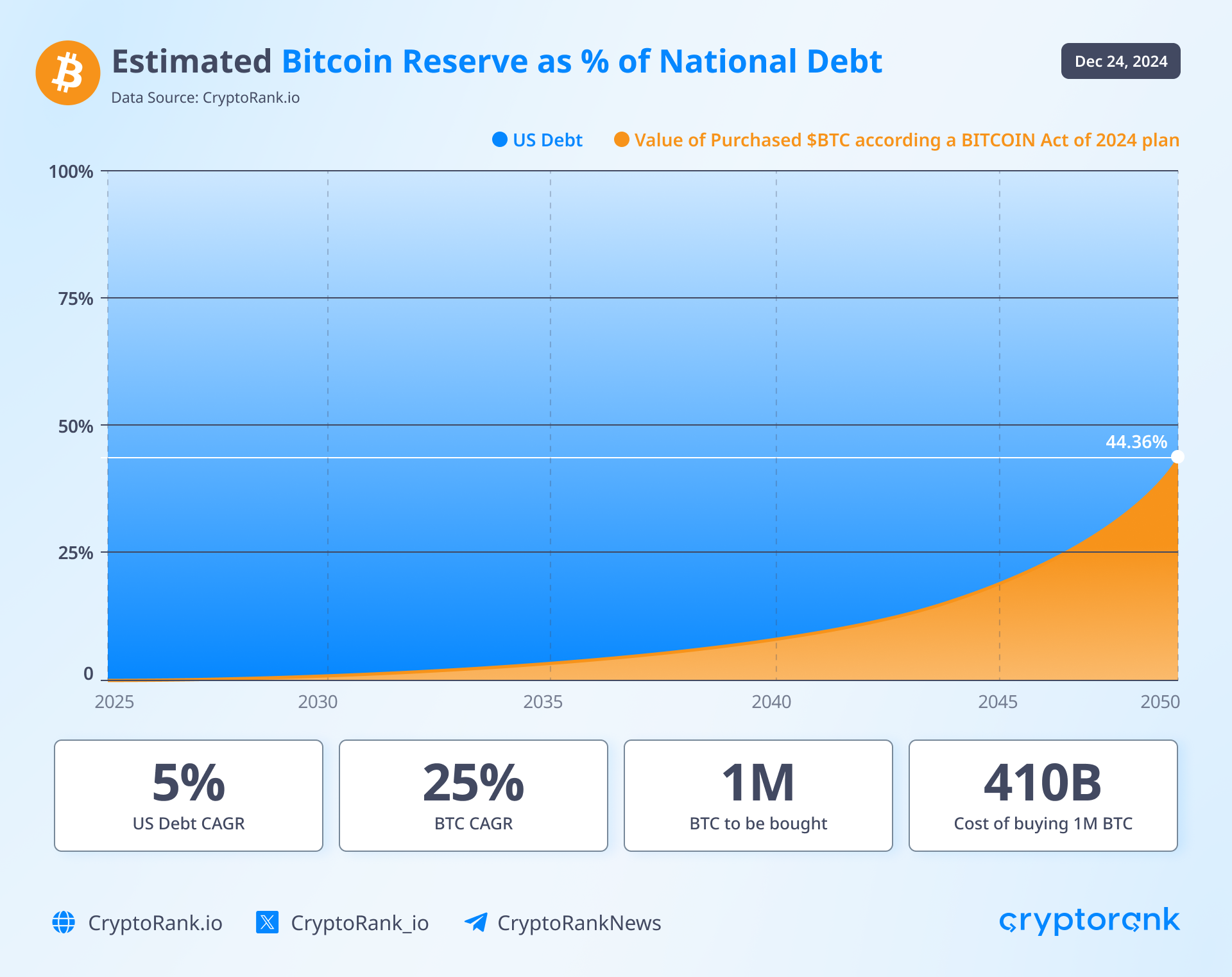
When Bitcoin is discussed at the highest political levels and positioned as "digital gold," it sets the asset apart from other cryptocurrencies, enhancing both its perceived legitimacy and its relative valuation. As a result, Bitcoin’s market dominance increased from 52% to 60% during Q1 2025. Given that the overall market is also expanding due to the emergence of new projects, this rise in dominance appears even more impressive.
State of Blockchains in Q1 2025
Ethereum As The Institutional Anchor
In Q1 2025, investor sentiment toward Ethereum shifted sharply as its price dropped nearly 50%, raising doubts about the asset’s future. This pessimism was echoed in the growing “Ethereum Has Died” narrative across social media and news outlets.
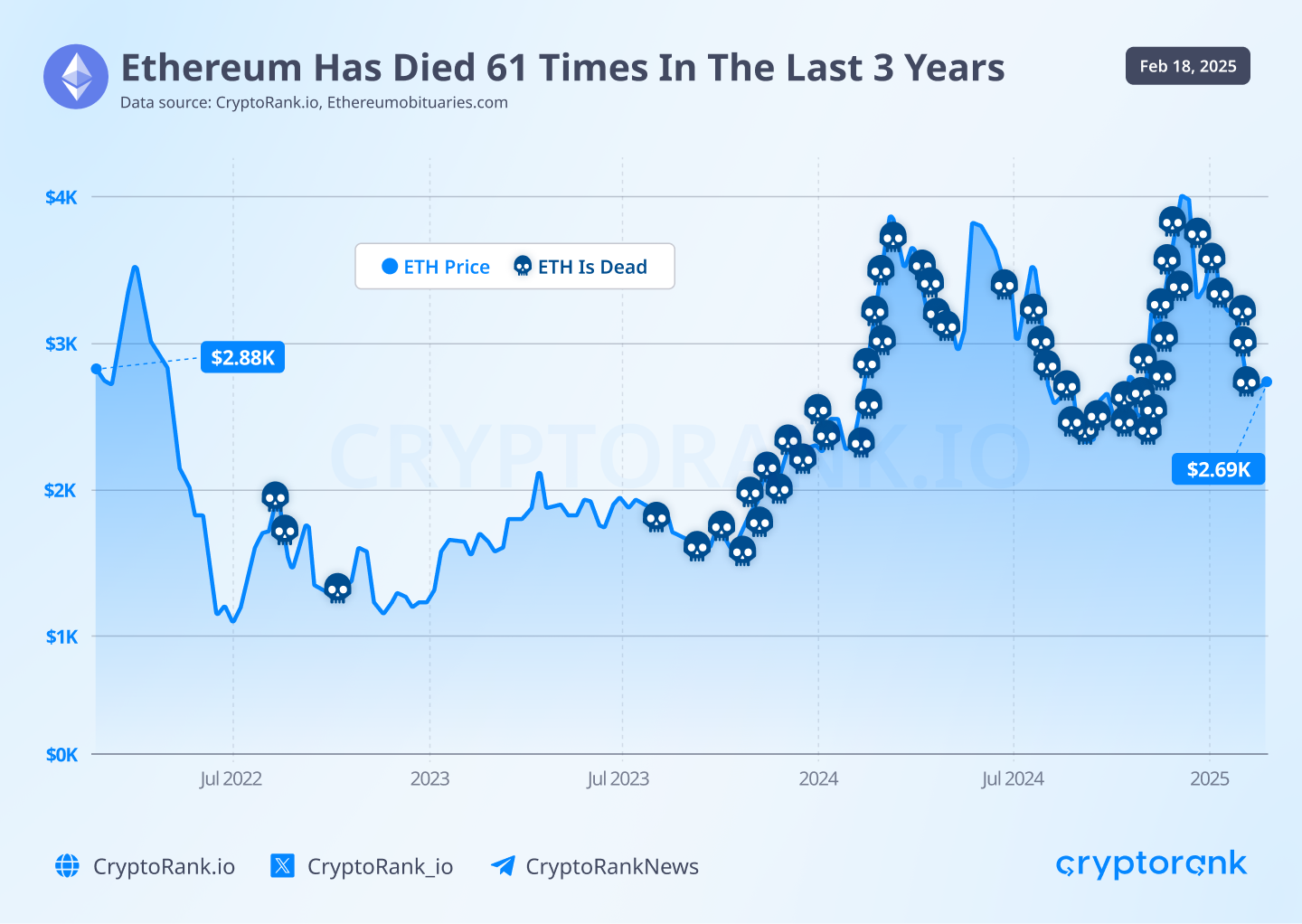
A widening disconnect emerged between Ethereum’s developer community and speculative traders, as every move by Vitalik Buterin was increasingly seen through the lens of ETH’s price struggles.
The sell-off was fueled by Ethereum’s caught in the crossfire of two dominant narratives: renewed interest in Bitcoin, driven by the U.S. BTC reserve, institutional accumulation (e.g., MicroStrategy), and El Salvador’s ongoing treasury purchases – and a surge in capital flowing into Solana amid meme coin hype and platforms like pump.fun. As a result, Ethereum saw a larger price decline than both Bitcoin and Solana during the first quarter.

Despite price underperformance, Ethereum has emerged as the leading platform for the Real World Assets (RWA) narrative. Currently, the network hosts approximately 56% of all tokenized RWA, including BlackRock’s tokenized fund BUILD, which saw its market cap grow by 200% to a record $1.94 billion. While this trend demonstrates institutional readiness to bring significant capital on-chain, it hasn’t translated into increased network activity or broader market enthusiasm for Ethereum.
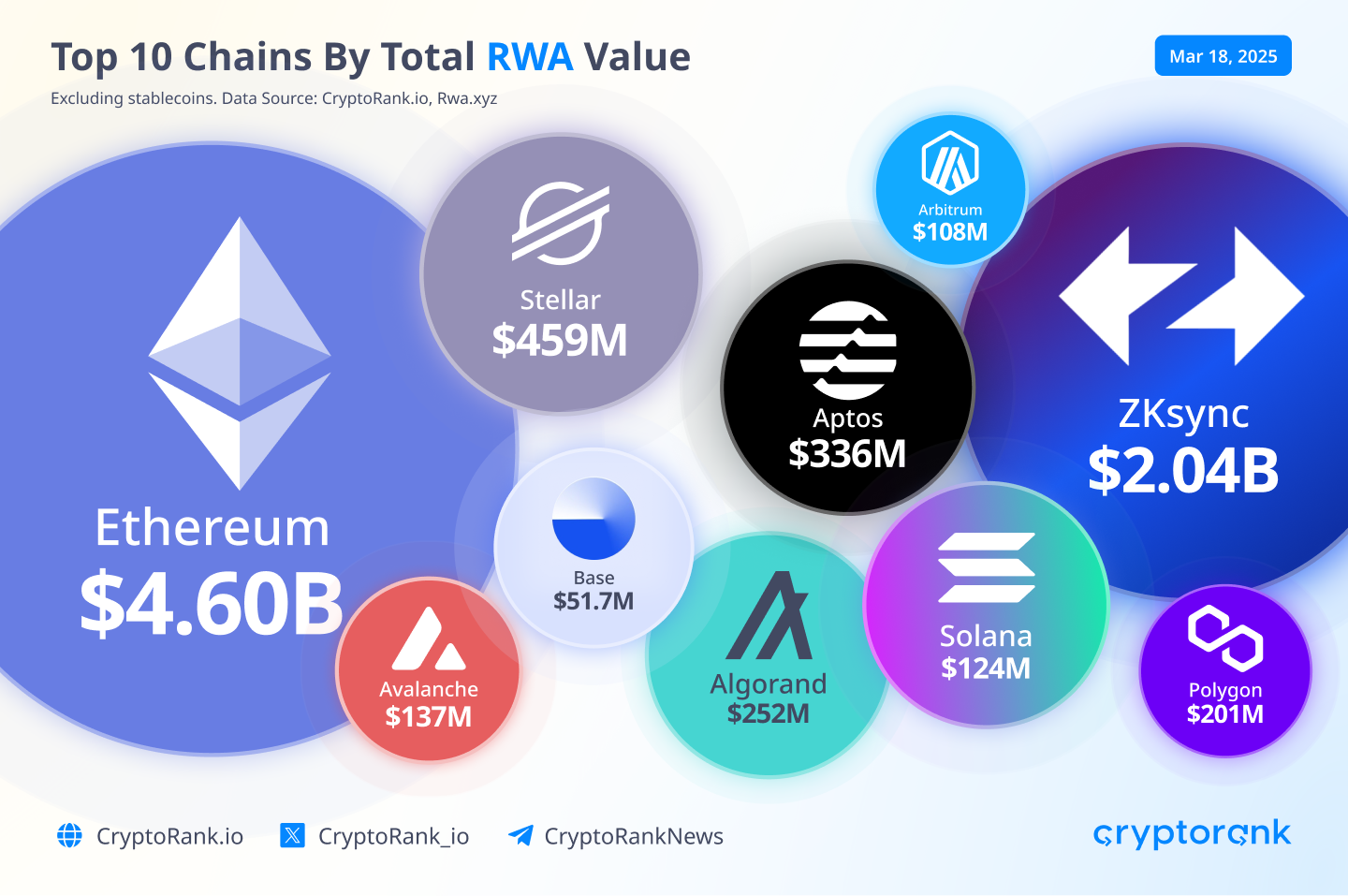
Interestingly, blockchain metrics suggest that the network’s activity remained stable despite the lack of bullish narratives and the price decline. Key indicators such as daily transactions and active addresses held steady.
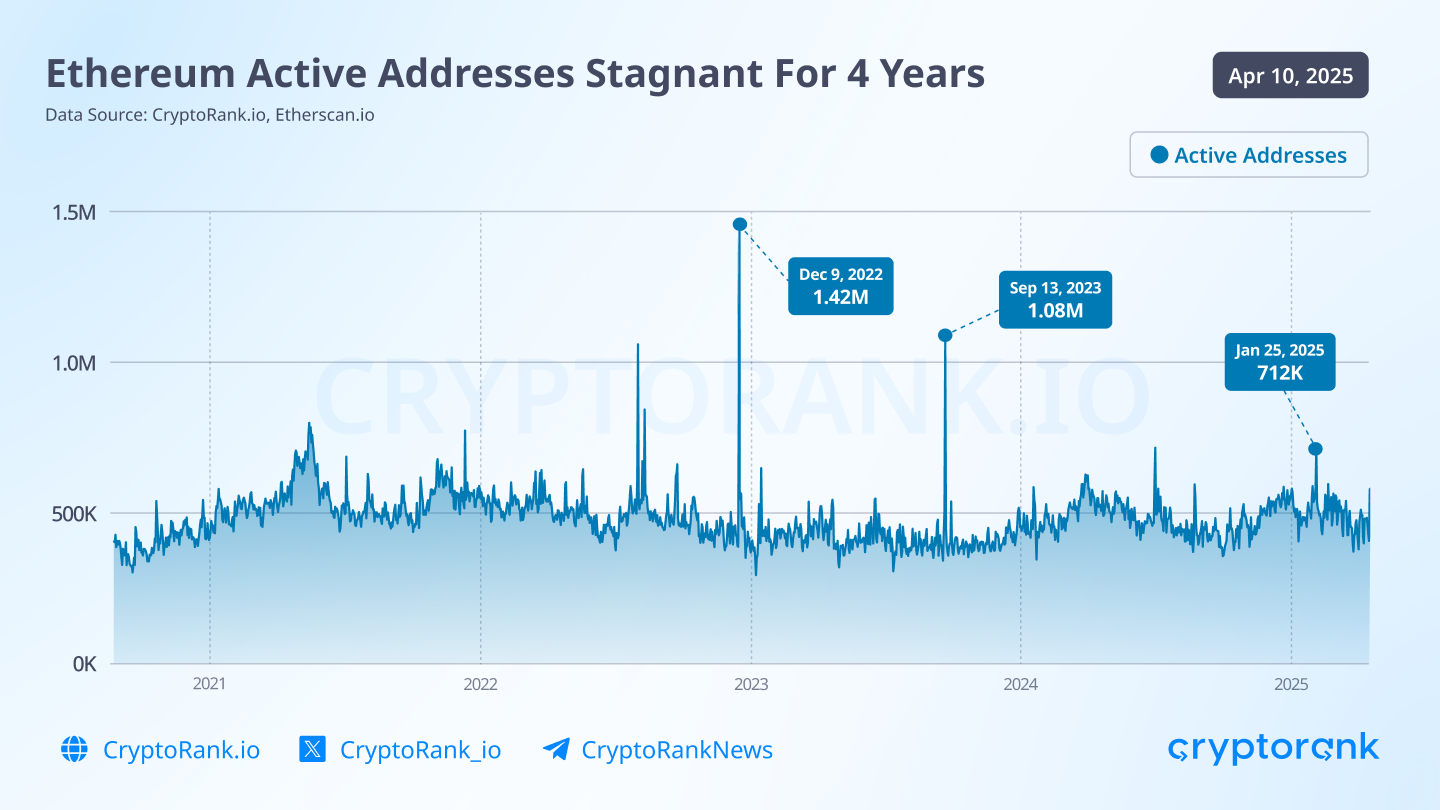
ERC-20 daily token transfers hit record highs in February. This spike was driven by Ethereum’s first gas limit increase since 2021, from 30 to 32 million, allowing more computation per block.

The gas limit hike significantly reduced transaction fees, dispelling Ethereum’s reputation as a «$50 per transaction» chain and making it more accessible to a broader Web3 user base.
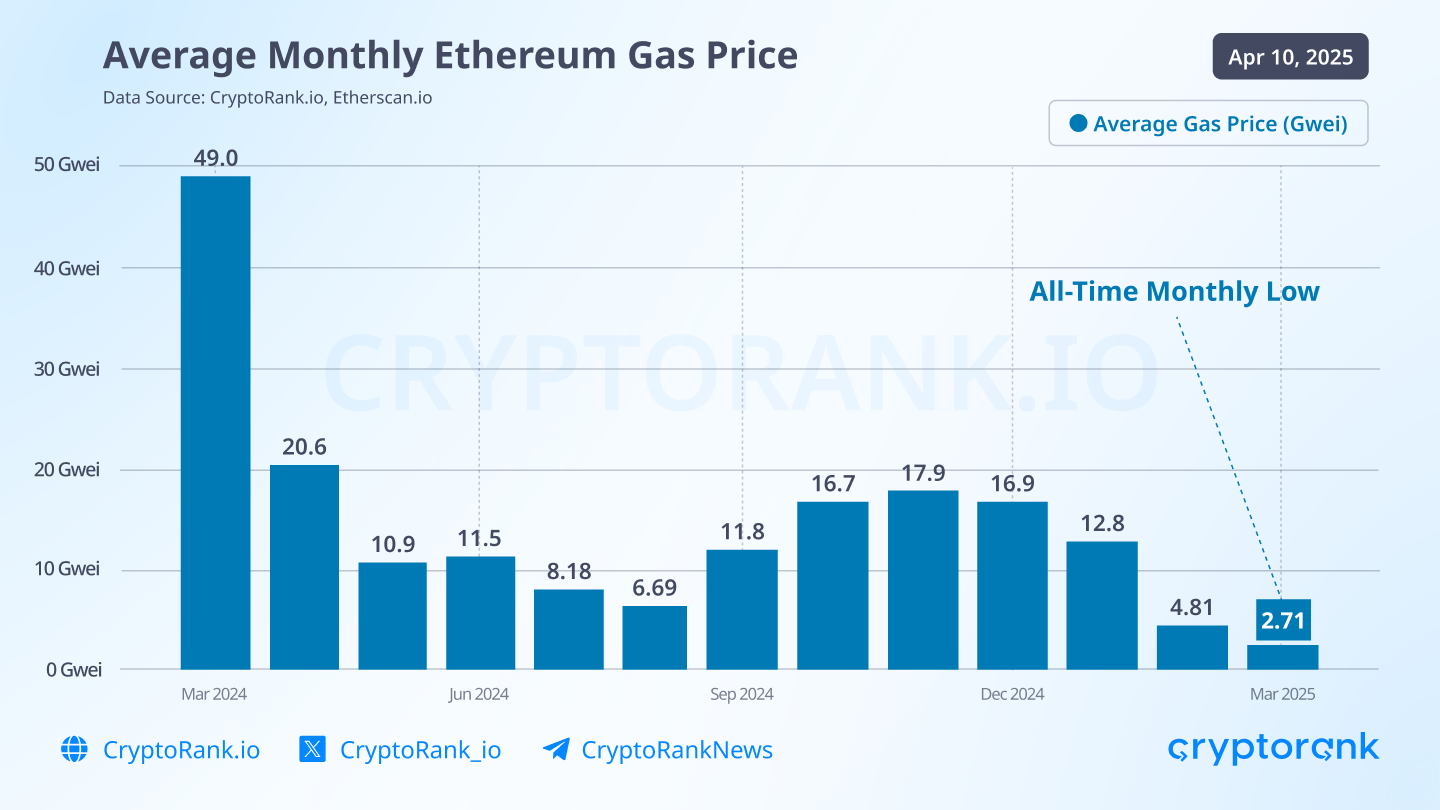
Notable developments in Q1 2025 include:
-
The launch of Open Intents Framework – initiated by the Ethereum Foundation in collaboration with Hyperlane and Bootnode, this framework aims to support intent-based architecture and reduce L2 fragmentation by simplifying cross-chain interactions.
-
Deployment of 50K ETH by Ethereum Foundation – foundation transferred 50,000 ETH to a DeFi multisig wallet and deposited the funds into Aave, Compound, and Spark. This move reflects a shift toward more efficient treasury management and signals continued support for established DeFi protocols rather than early-stage projects.
-
Unichain Launch and Uniswap v4 Upgrade – Uniswap introduced its own L2, Unichain, and rolled out v4 of the protocol, featuring a new “Hooks” architecture that allows developers to customize liquidity pool behavior more deeply. (See our article “Uniswap v4 Hooks: How to Use Them to Profit.”)
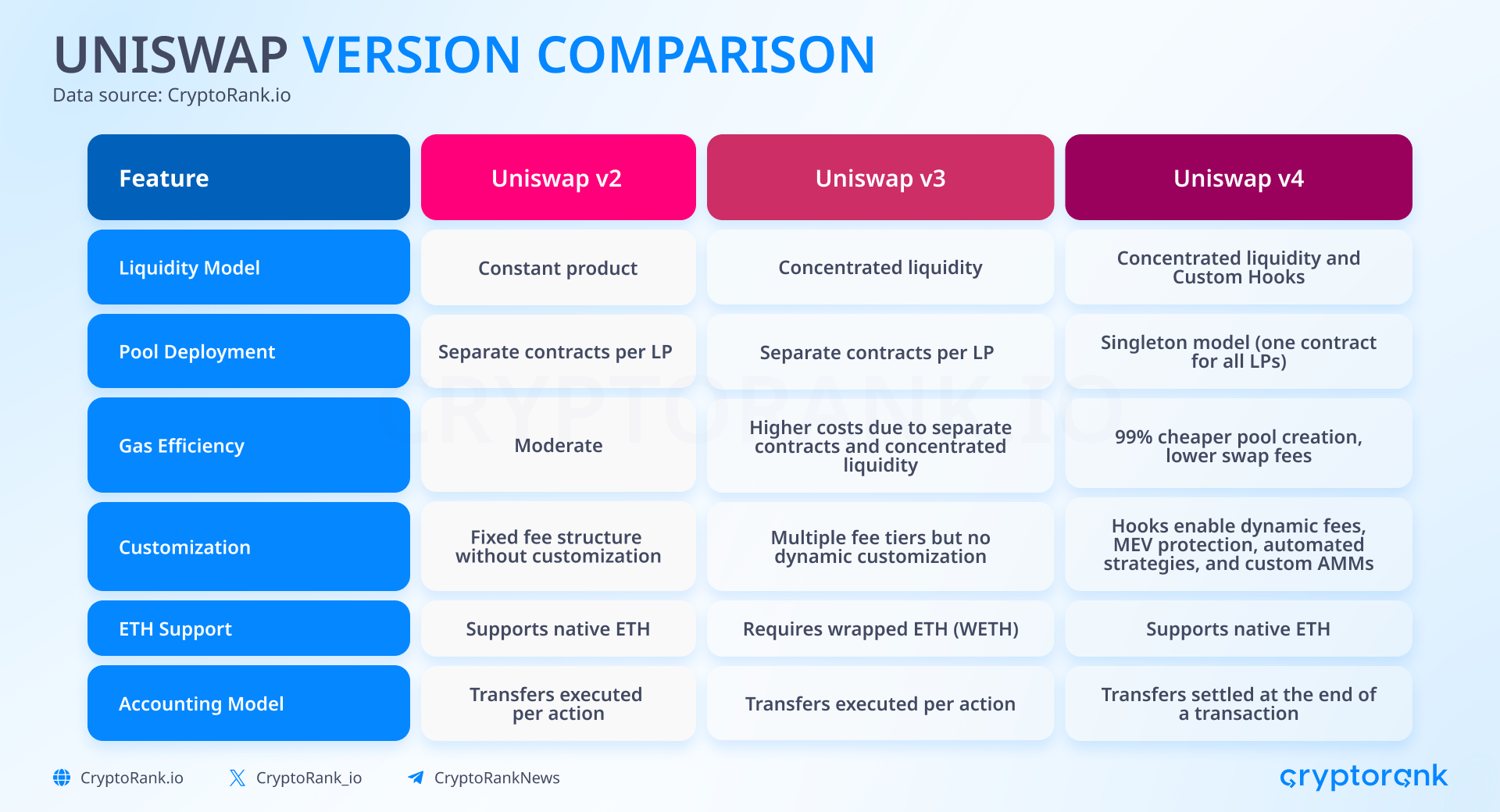
In early May, Ethereum is expected to undergo the Pectra hardfork, which will introduce several consensus-layer improvements aimed at simplifying validator operations. However, the most impactful change for end users will come from EIP-7702, marking a significant step toward Account Abstraction (AA).
EIP-7702 proposes a new transaction type that allows an Externally Owned Account (EOA) to temporarily act as a smart contract by signing a permission that delegates logic execution. In essence, the user can authorize their EOA to “behave like” a chosen smart contract for the duration of a single transaction. This mechanism bridges the gap between EOAs and smart contract wallets by allowing EOAs to delegate operations without losing backward compatibility.
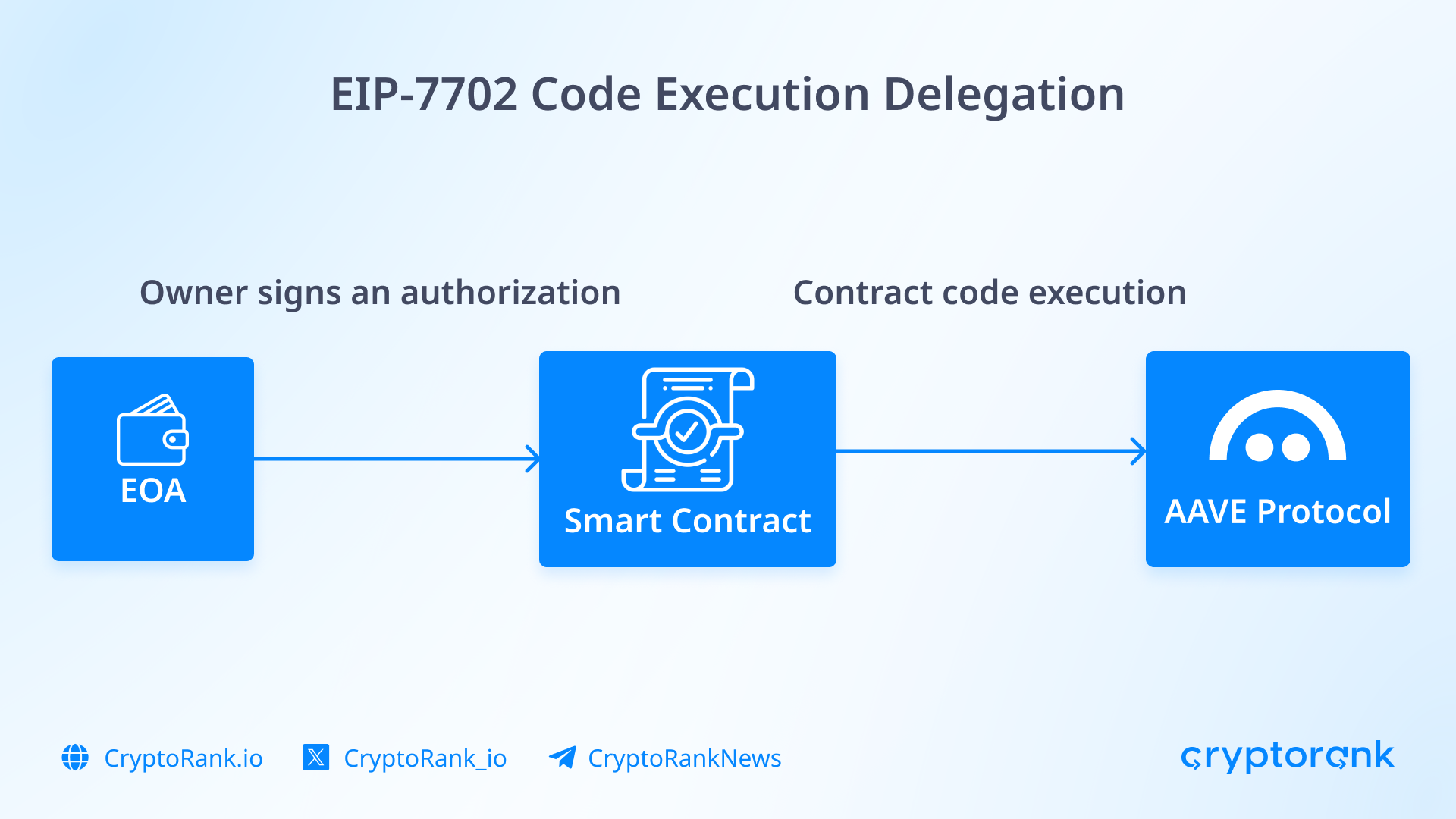
EIP-7702 introduces several enhancements to the on-chain user experience:
-
Batching. Users can now execute multiple actions in a single transaction. For example, instead of approving a token and then confirming a swap separately, both operations can be bundled and delegated to a Uniswap contract for seamless execution.
-
Sponsorship. Other users or dApps will be able to pay transaction fees on behalf of the user. This unlocks true gasless transactions and brings the Ethereum UX closer to Web2 standards – enabling one-click, fee-less interactions without requiring users to hold ETH.
-
Social Recovery. Custom smart contracts can implement multi-party recovery logic, allowing trusted entities to vote on restoring wallet ownership if the original private key is lost. This provides a user-friendly approach to security and key management.
Currently, Ethereum and its Layer 2 networks process roughly 20M daily transactions, but only 1M of those are user-originated transactions. As a result, it’s unlikely that EIP-7702 will see immediate mass adoption, unlike EIP-1559, which captured 50% of all transactions within a month of deployment.
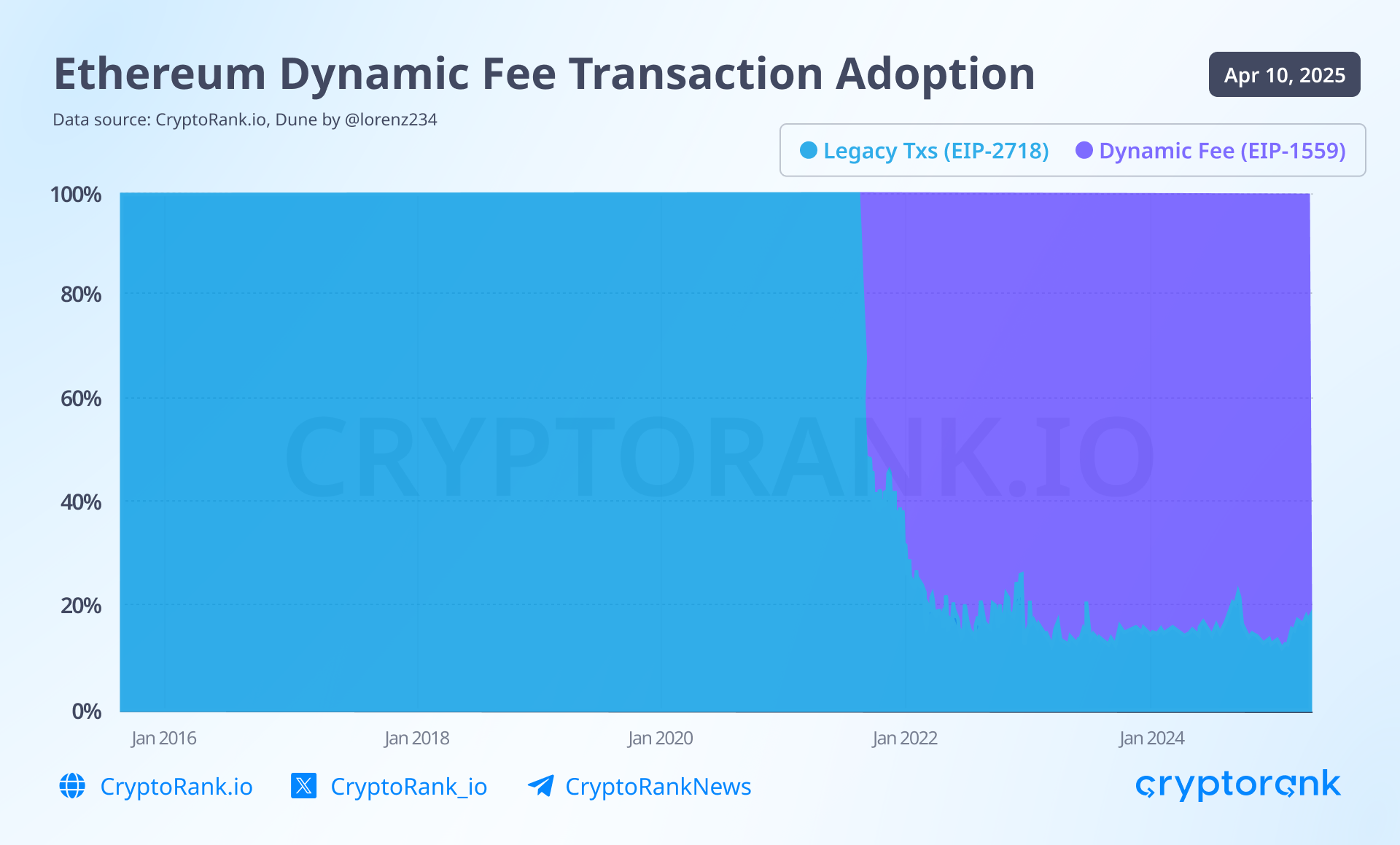
Rising Internal Competition Within the Solana Ecosystem
In the first quarter of 2025, Solana began to show a decline across key metrics, including revenue and DEX trading volume, along with several others. This downturn was largely driven by waning interest in memecoin trading and the rapid collapse of the trend around AI agents on the blockchain.
As the overall "pie" — in terms of new user inflows and revenue — started to shrink, competition within the Solana ecosystem intensified. Projects began to fight more aggressively over the existing user base and the revenue that could still be generated from it.
One of the most striking examples of this internal competition was the launch of a new DEX by pump.fun. The move put it in direct competition with Raydium, which had previously benefited from a partnership with pump.fun by serving as the go-to liquidity venue for memecoins that surpassed a $100,000 market cap. Within less than a week, pump.swap managed to capture 20% of Solana's DEX trading volume.
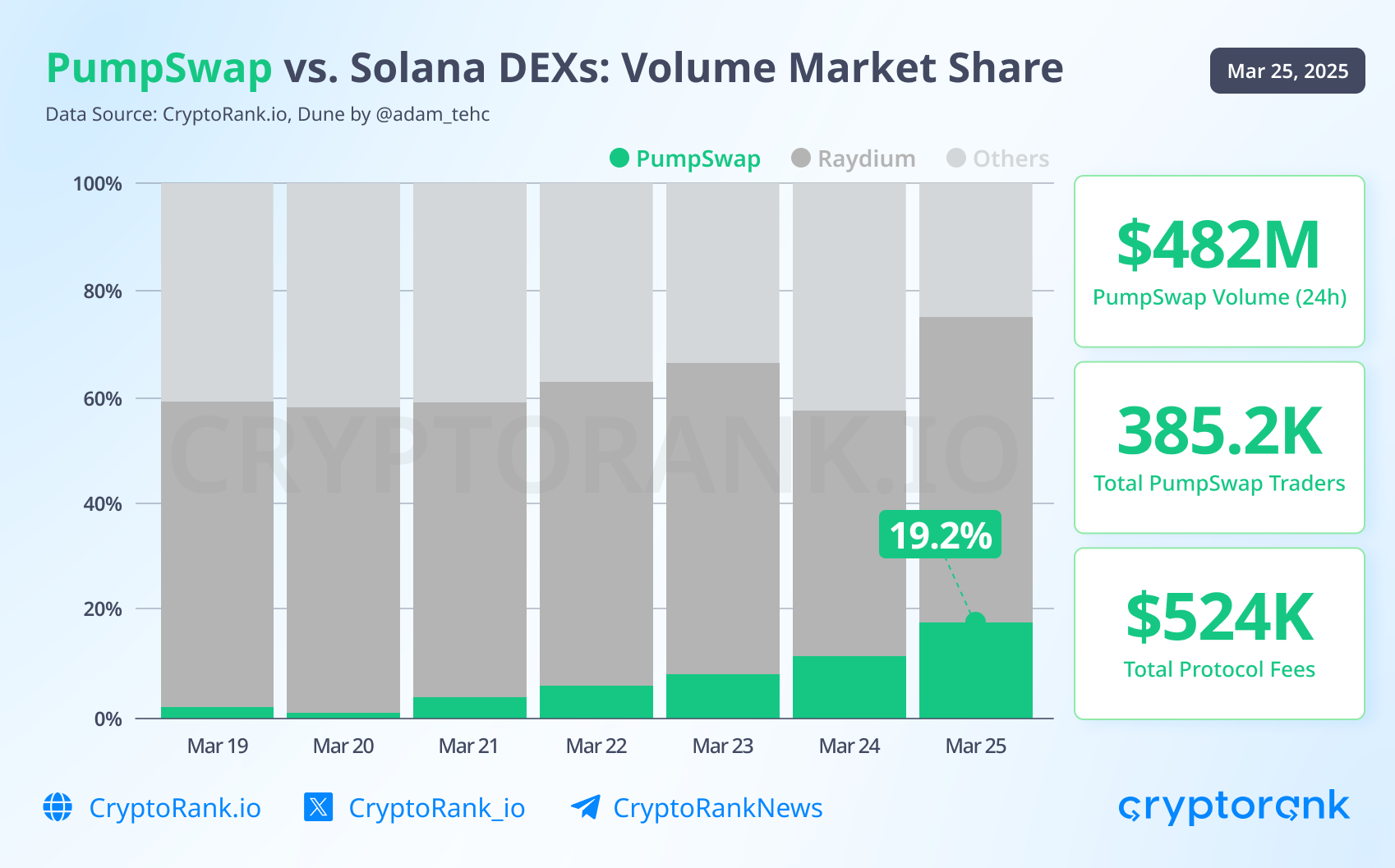
Berachain: Rise Of Proof-Of-Liquidity
Among the many L1 networks launched in recent years, Berachain has captured significant attention even before the launch of its mainnet. The project raised $142M in funding from Polychain Capital, Framework Ventures, and HashKey Capital.
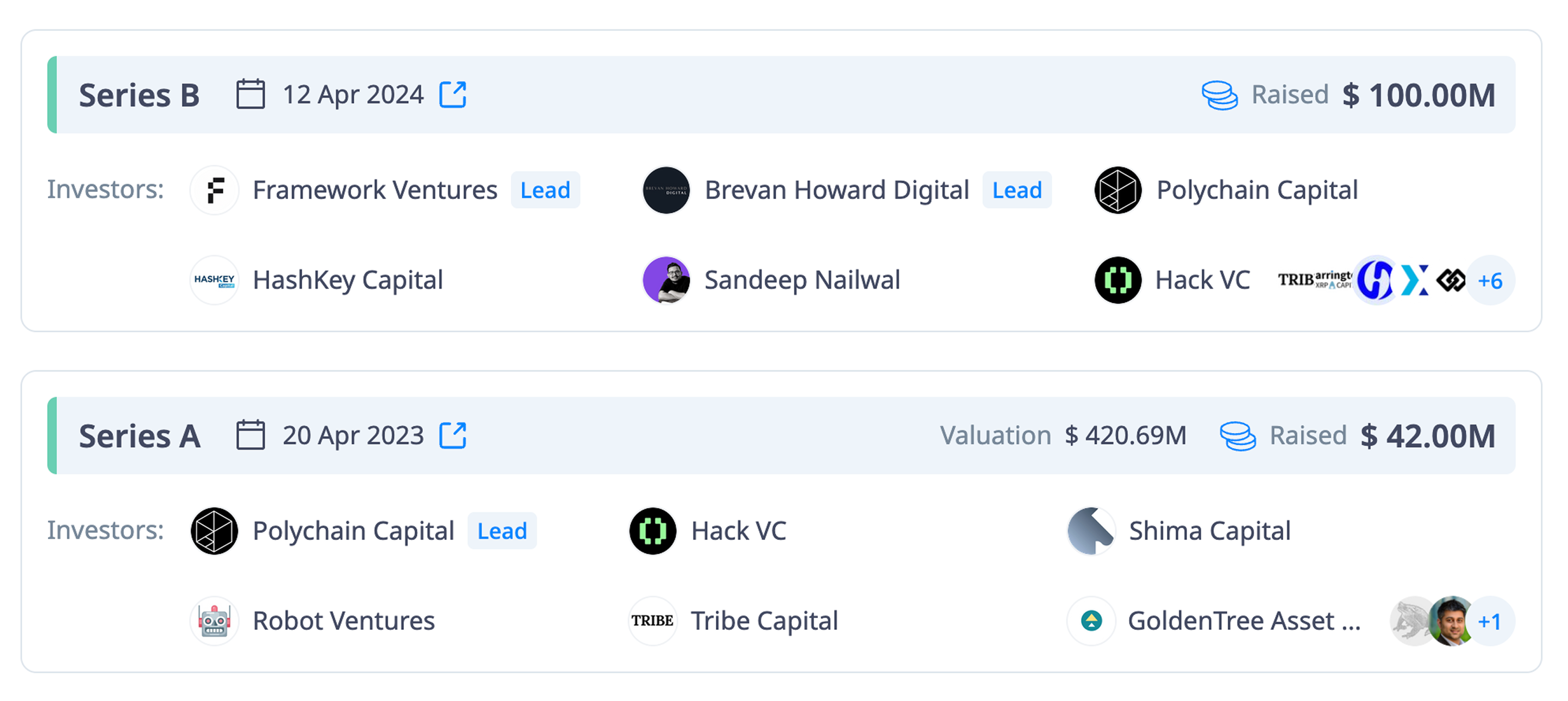
What sets Berachain apart is its unique hybrid architecture: it’s built using the Cosmos SDK, yet maintains full EVM compatibility, allowing seamless deployment of Ethereum-native applications. Its most groundbreaking innovation is the Proof-of-Liquidity (PoL) consensus mechanism – a variation of Proof-of-Stake that incentivizes validators not only for staking tokens, but for directing emissions toward productive onchain behaviors like liquidity provisioning or protocol usage.
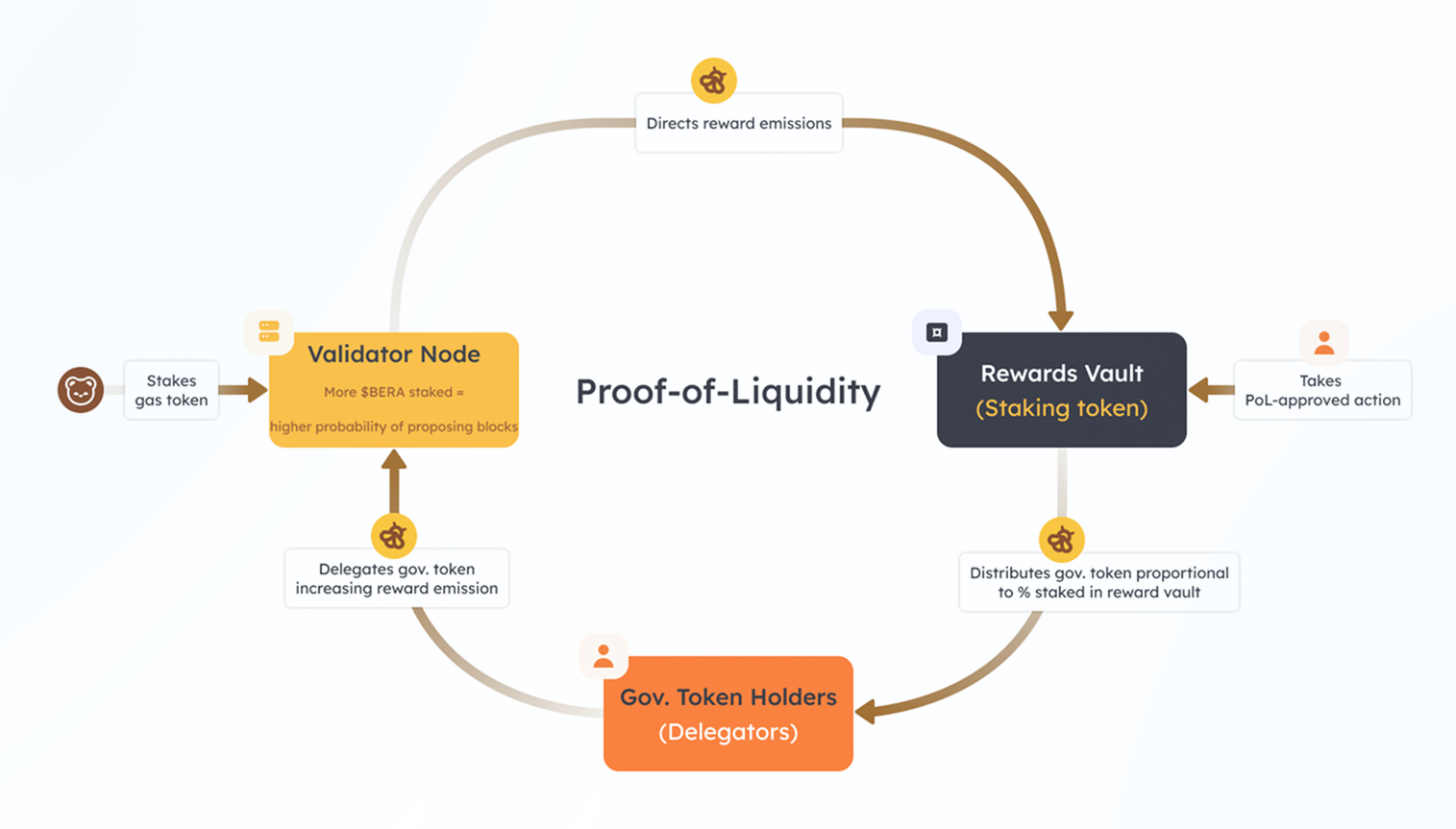
While PoL shares structural similarities with PoS, its reward model is fundamentally different. In PoS, validators earn transaction fees from block inclusion. In PoL, validators receive 15% of each block’s reward, but this reward isn’t paid in the gas token – it comes in the form of $BGT, the protocol’s governance and emissions token.
Berachain operates on a multi-token model, designed to separate concerns across utility, governance, and stable value:
-
BERA – The gas and staking token used for transaction fees and validator bonding.
-
BGT – A non-transferable token earned through staking BERA or providing PoL eligible LP tokens. Used for governance voting and boosting validator rewards.
-
HONEY – A USD-pegged stablecoin used in ecosystem applications such as Bend and Honey App. While not part of the core protocol layer, it serves as collateral and medium of exchange in DeFi use cases.
Berachain’s launch strategy was just as sophisticated as its design. Rather than relying on a testnet and speculative hype, the team initiated a coordinated pre-mainnet campaign to seed liquidity, onboard protocols, and stress-test its incentive framework. At the heart of this strategy was Royco, a marketplace for incentivized onchain actions. Users could lock assets like USDC, wETH, and wBTC into protocol-specific vaults and earn early ecosystem rewards.
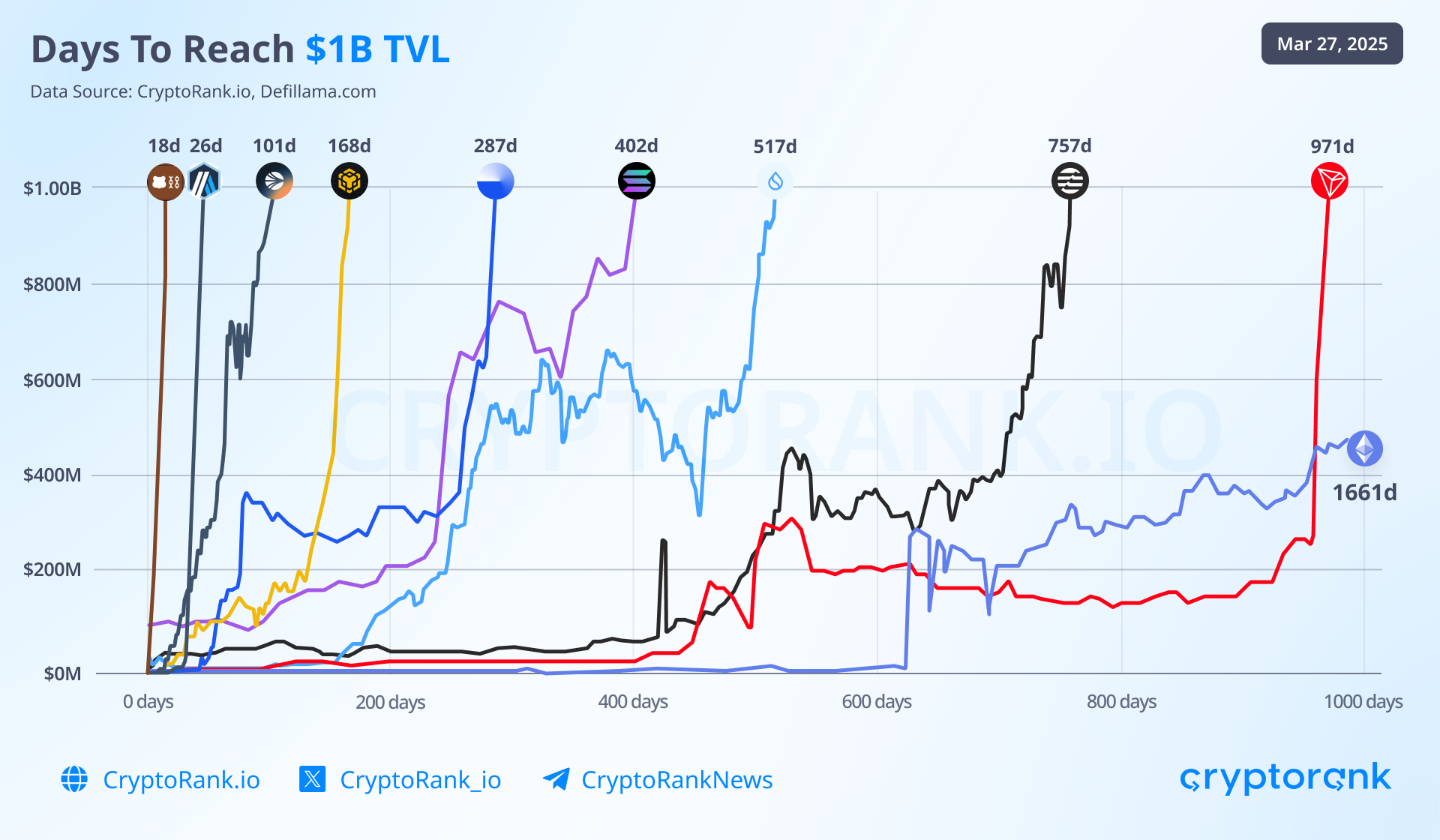
This strategy proved highly effective: Berachain reached $1B in TVL within just 18 days. By late March, its TVL exceeded $3B, surpassing major networks like Arbitrum, Sui, and Avalanche.
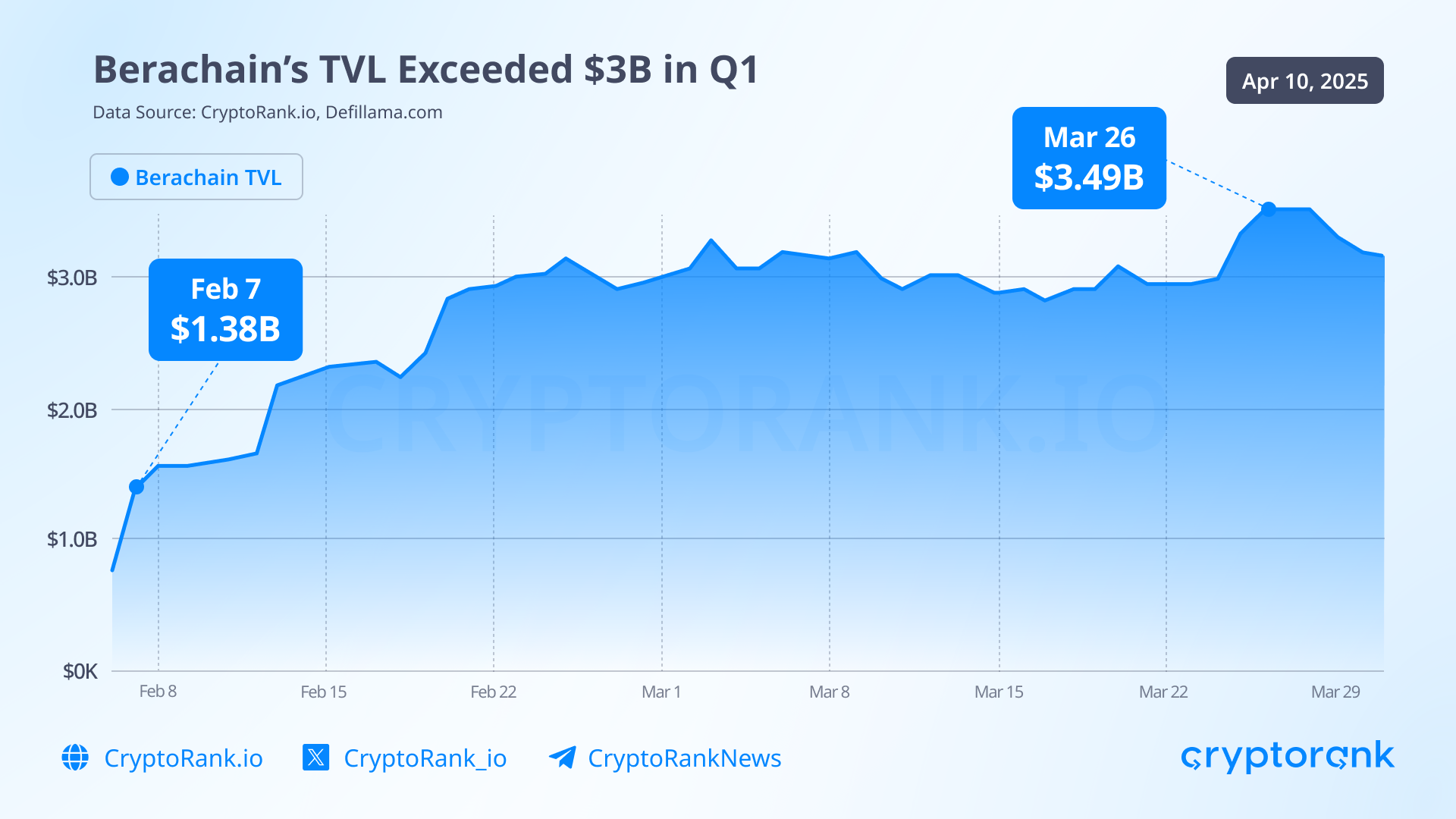
Many protocols on Berachain currently offer attractive yields. One notable example is Berapaw, which enables users to mint $LBGT – a liquid version of $BGT. When users mint $LBGT, they give their $BGT to the project in exchange. 10% of all newly issued $LBGT is allocated to validator incentives, and in return, validators contribute block rewards to Berapaw’s vaults, maintaining high APRs across liquidity pools.

Berachain’s momentum is further driven by several key factors: the strong price action of BERA, attractive on-chain yields, and growing community engagement. Its flagship NFT collection, Steady Teddys, recorded over $2.5 million in trading volume (665.8K BERA), and network activity remains consistently high – at times surpassing Ethereum in daily transaction count.

Sonic: Developer-Centric Incentives Drive Early Adoption
The second L1 chain that successfully attracted market liquidity in Q1 2025 was Sonic – an EVM-compatible blockchain launched on December 18, 2024. Developed by the former Fantom team, now operating as Sonic Labs, the network is engineered to support high-throughput applications. Sonic achieves up to 10,000 transactions per second (TPS) with sub-second finality, significantly surpassing other Ethereum-compatible networks.
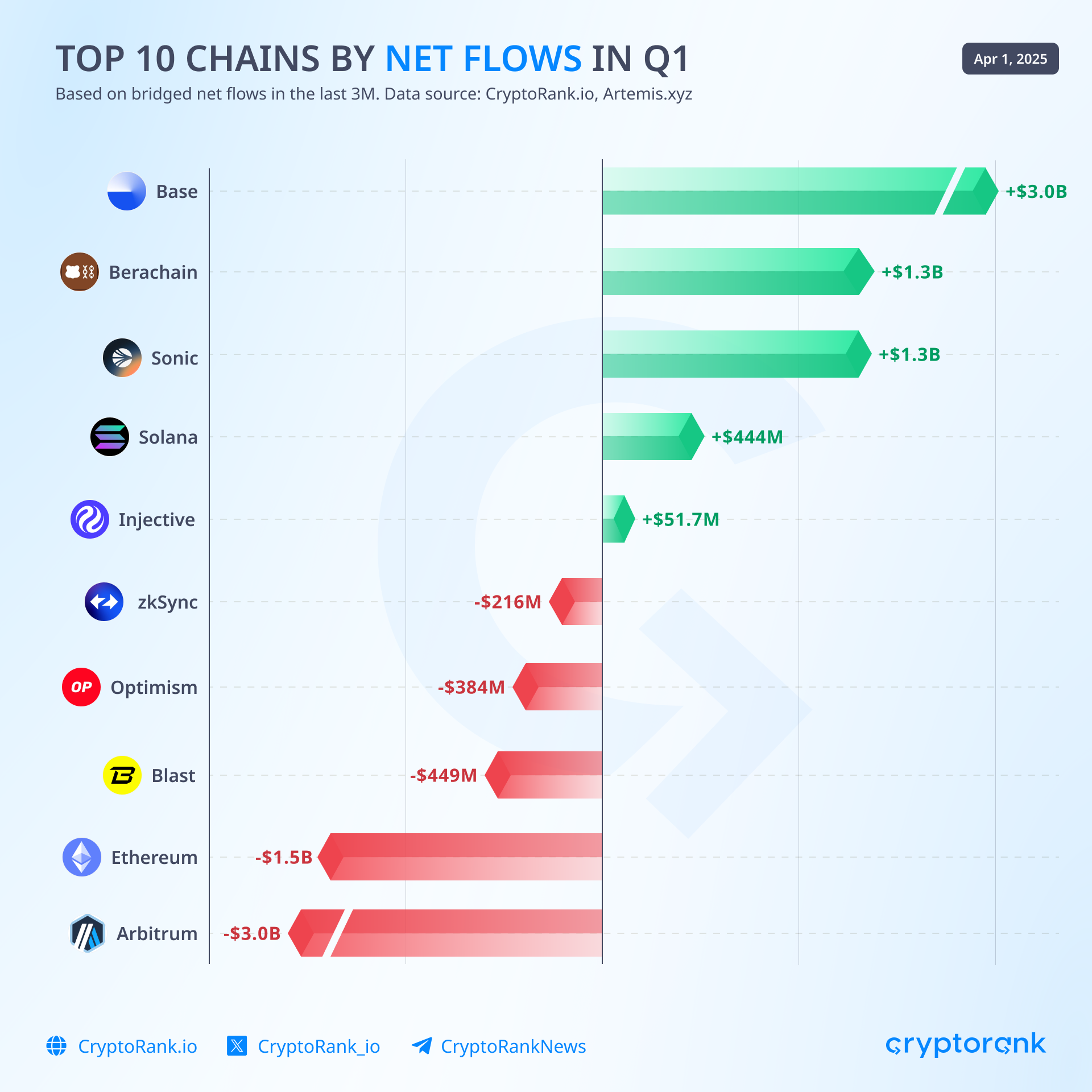
Sonic distinguishes itself with several core technical innovations:
-
SonicVM. A purpose-built virtual machine optimized for faster and more efficient smart contract execution.
-
SonicDB. A live-pruning database that reduces long-term storage burdens for validators.
-
Full EVM Compatibility. A native support for Solidity and Vyper, enabling seamless migration of Ethereum-based applications.
A key component of Sonic’s go-to-market strategy is its strong focus on developer incentives. The network’s Fee Monetization Program allows developers to earn up to 90% of transaction fees generated by their dApps – a revenue-sharing model inspired by platforms like YouTube. This approach rewards developers for building high-usage applications, helps retain builders and liquidity, and reduces the need for separate appchains, preserving composability.
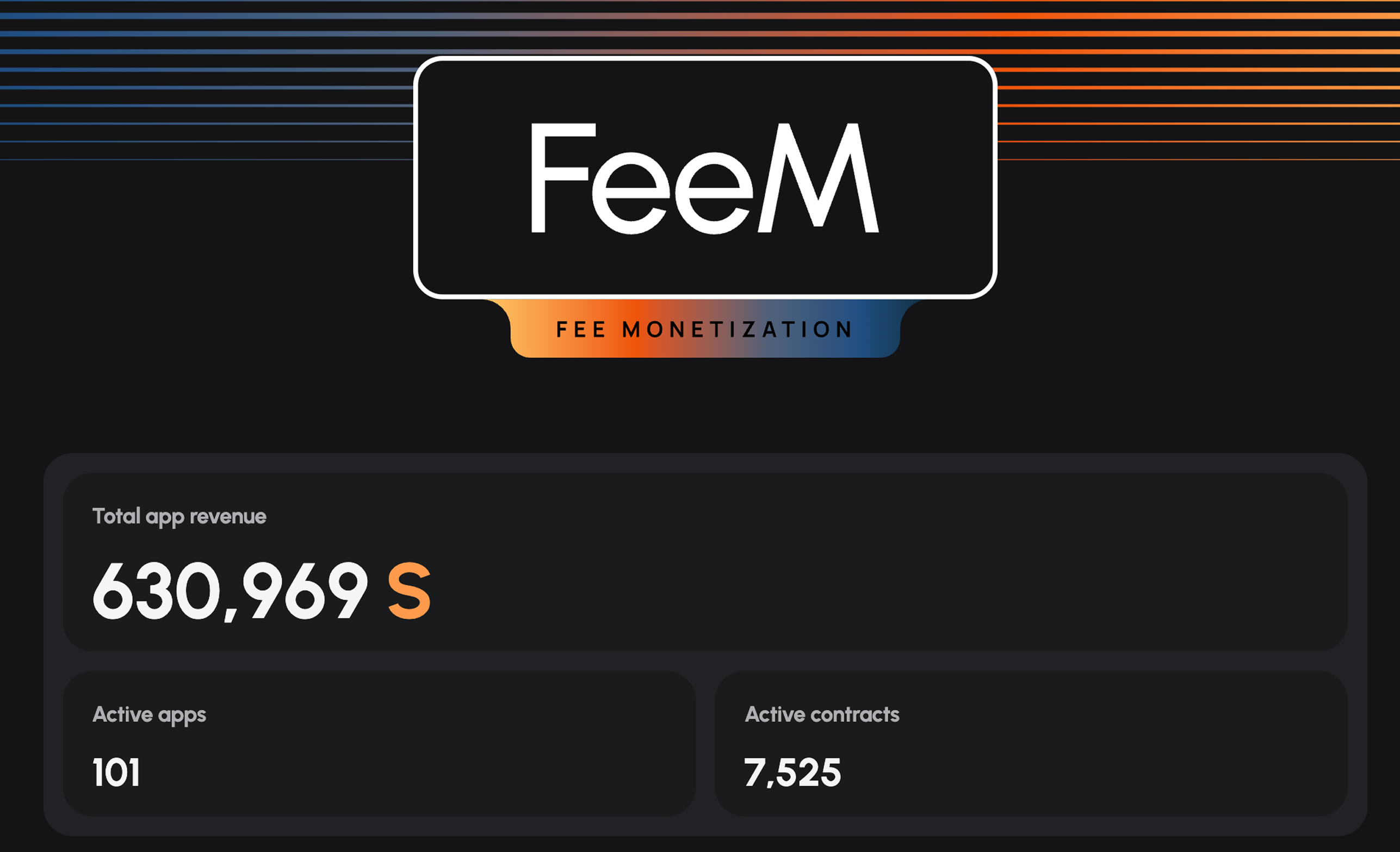
Just four months after mainnet launch, Sonic reached $1B in TVL. The network onboarded major DeFi protocols such as AAVE, Pendle, Avalon Labs, and Silo Finance.
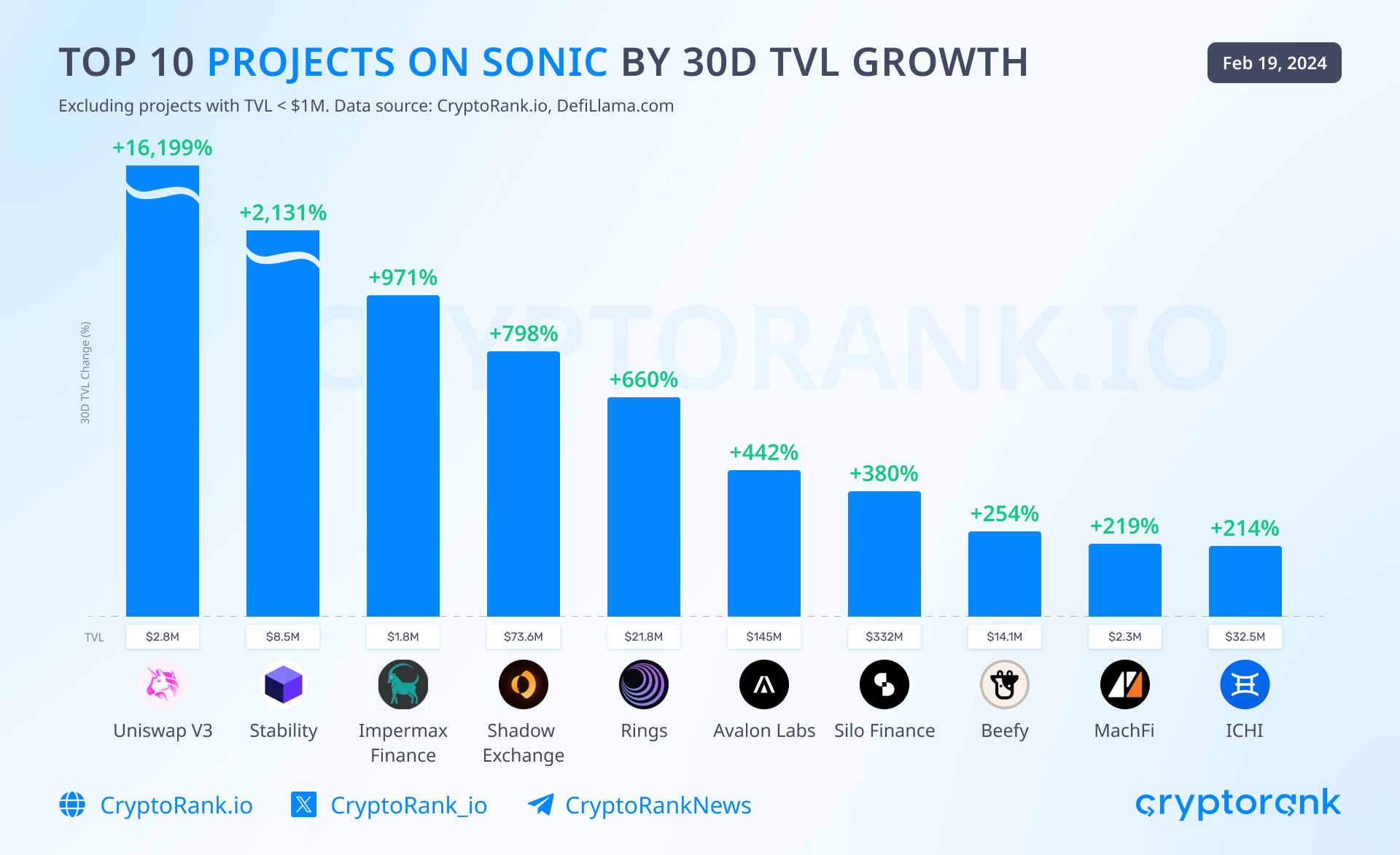
Sonic’s ecosystem continues to expand rapidly, now comprising over 101 active applications. A major contributor to this growth has been Shadow Exchange, which emerged as the dominant DEX on Sonic. Its success helped position Sonic among the top chains by application revenue in February 2025.

Stablecoin adoption on Sonic has kept pace with ecosystem expansion. The total value of stablecoins on the network has surpassed $500 million, led by USDC.e, followed by scUSD.

Sonic also emerged as the leading blockchain in TVL growth during the first quarter. Moreover, it was the only blockchain with over $100 million in TVL to make it into the top 10 for TVL growth in Q1.

Closing Thought About Blockchains
In a saturated landscape of L1 and L2 blockchains, gaining traction has become increasingly difficult for new networks. However, Berachain and Sonic both demonstrated in Q1 2025 that it’s still possible to capture market attention – by designing robust incentive structures for both users and developers.
Meanwhile, upcoming chains like Monad and MegaETH are currently in testnet phase. To compete, they will need to carve out distinct value propositions and market entry strategies tailored to today’s fragmented and competitive Web3 environment.
The Biggest Hack in Crypto History
In Q1 2025, the crypto market was shaken by the largest security breach in its history — a $1.5 billion exploit of Bybit’s asset management platform. The attack was swiftly linked to the North Korean Lazarus Group, a state-sponsored cybercrime organization known for targeting crypto platforms to fund illicit state operations. This marked the most devastating strike in a years-long campaign by Lazarus, which had previously breached major players like Ronin Network, DMM Exchange, and WazirX.
Despite the unprecedented scale of the exploit, Bybit managed the crisis with remarkable professionalism, swiftly restoring operations and reinforcing trust among users. As shown in the accompanying infographic, Lazarus has stolen billions across the ecosystem, underscoring the persistent geopolitical threats the industry is facing.
The Decline of the Meme Coin Mania
In Q1 2025, most meme coins experienced a sharp drop in both price and trading volume. Several factors contributed to this downturn, each playing a role in the fading of the trend.
The first and most natural reason is the bursting of the meme coin bubble. As the influx of new users and liquidity dried up, enthusiasm around the trend waned. Trading activity in meme coins fell off, leading to a broad decline in prices.
Another factor was the launch of politically themed tokens like $TRUMP and $MELANIA. Many users believe these tokens diverted liquidity away from other meme coins, accelerating the decline in trading volume and market cap. The controversial debut of the $LIBRA token arguably marked the final nail in the coffin for the meme coin hype cycle.
The third reason is more macroeconomic in nature. The drop in the S&P 500 dragged Bitcoin down with it — and when Bitcoin falls, altcoins typically follow. Meme coins, being even more volatile, suffered the most in this cascade.
All of these elements combined to bring an end to the meme coin trend, which had been in full swing for roughly six months, starting around July 2024.
Meme coins initially thrived due to their lack of VC involvement, low starting market caps, and the potential for outsized returns. However, their lack of fundamental value and extreme volatility make them far less appealing in the current market environment.
The Stablecoin Boom Amid a Market Downturn
Q1 2025 revealed a clear new trend in crypto: the rise of stablecoins. In times of steep market declines, their lack of volatility becomes a major advantage. Coupled with integrated yield mechanics, stablecoins are becoming increasingly attractive to both retail and institutional players.
Many crypto projects are now focused on launching their own stablecoins, tailored to different audiences and use cases. For example, Sonic is preparing to launch an algorithmic stablecoin that offers yields of up to 23% APR, according to Andre Cronje, co-founder of Sonic Labs and founder of Yearn.finance. The projected returns vary by TVL: over 200% APR at $10 million TVL, around 23.5% at $100 million, and a stable 4.9% at $1 billion+.
Another notable development is Fidelity’s upcoming stablecoin, designed specifically for institutional use — highlighting growing interest from traditional finance.
Even government entities are entering the space. Wyoming is set to become the first U.S. state to issue a state-backed stablecoin, with a launch planned for July 2025.
The stablecoin market continues to grow in capitalization, expanding its scope with new functionalities and applications — signaling a new phase in crypto adoption.
The Bottom Line
Q1 2025 was a highly volatile period for the crypto market. On one hand, Bitcoin hit a new all-time high during the quarter; on the other, it dropped by over 25% by the end of March. Altcoins, from Ethereum to meme coins, also suffered sharp declines.
It’s important to note that the current state of the crypto market is largely shaped by external macroeconomic factors. This suggests that a rebound could be on the horizon if the U.S. stock market begins to recover.
Disclaimer: This post was independently created by the author(s) for general informational purposes and does not necessarily reflect the views of ChainRank Analytics OÜ. The author(s) may hold cryptocurrencies mentioned in this report. This post is not investment advice. Conduct your own research and consult an independent financial, tax, or legal advisor before making any investment decisions. The information here does not constitute an offer or solicitation to buy or sell any financial instrument or participate in any trading strategy. Past performance is no guarantee of future results. Without the prior written consent of CryptoRank, no part of this report may be copied, photocopied, reproduced or redistributed in any form or by any means.
In This Insight
Coins
Table of Contents
- Overall Market Performance: Bitcoin, S&P 500, and Gold
- Bitcoin: More Than Just a Crypto Asset
- State of Blockchains in Q1 2025
- Ethereum As The Institutional Anchor
- Rising Internal Competition Within the Solana Ecosystem
- Berachain: Rise Of Proof-Of-Liquidity
- Sonic: Developer-Centric Incentives Drive Early Adoption
- Closing Thought About Blockchains
- The Biggest Hack in Crypto History
- The Decline of the Meme Coin Mania
- The Stablecoin Boom Amid a Market Downturn
- The Bottom Line
Table of Contents
- Overall Market Performance: Bitcoin, S&P 500, and Gold
- Bitcoin: More Than Just a Crypto Asset
- State of Blockchains in Q1 2025
- Ethereum As The Institutional Anchor
- Rising Internal Competition Within the Solana Ecosystem
- Berachain: Rise Of Proof-Of-Liquidity
- Sonic: Developer-Centric Incentives Drive Early Adoption
- Closing Thought About Blockchains
- The Biggest Hack in Crypto History
- The Decline of the Meme Coin Mania
- The Stablecoin Boom Amid a Market Downturn
- The Bottom Line